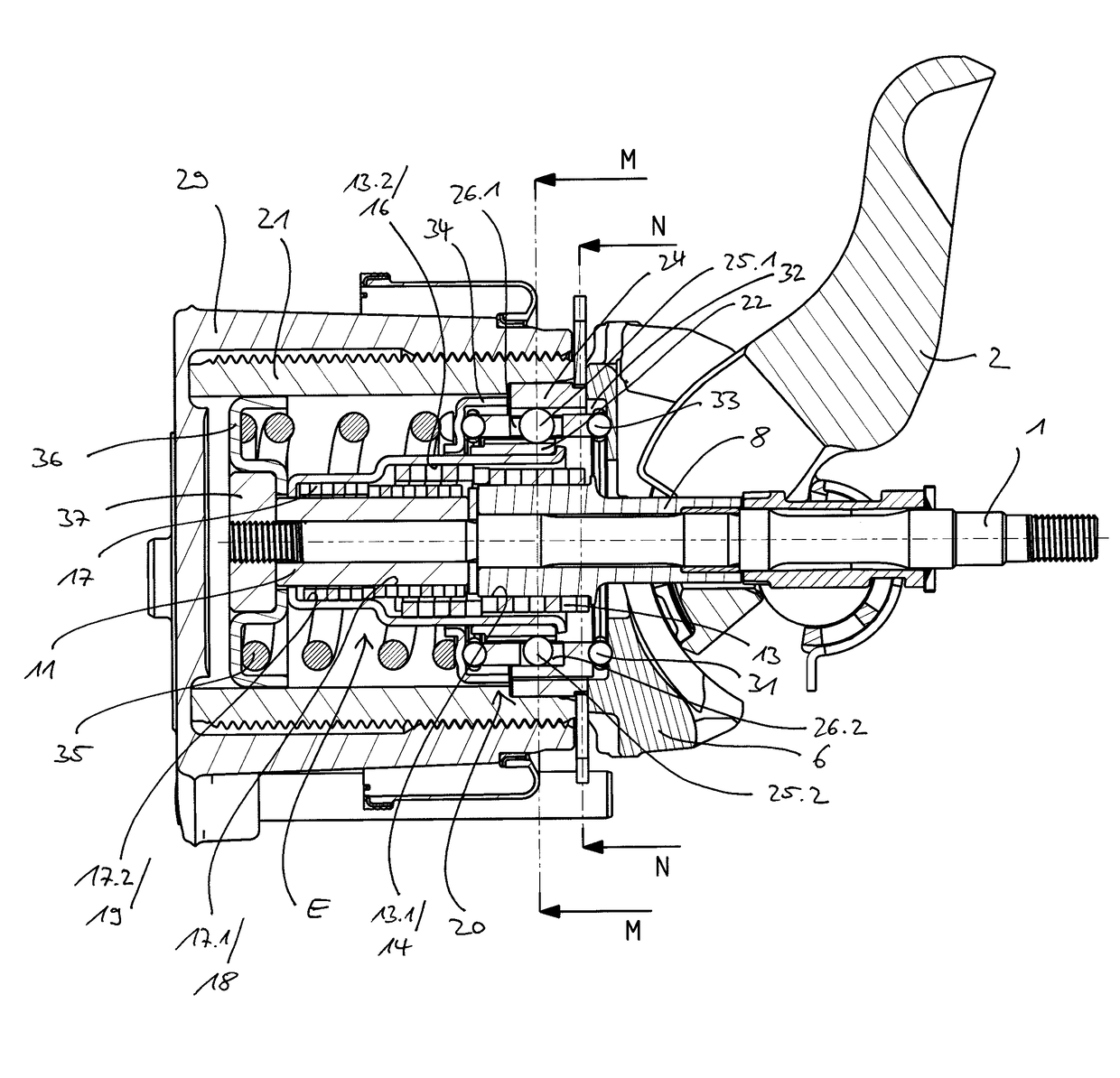Brake Actuation Mechanism For A Disc Brake And Disc Brake Comprising The Same
a technology of disc brake and actuation mechanism, which is applied in the direction of actuators, slack adjusters, braking elements, etc., can solve the problems of slack, counter-torque, and decrease of wear-induced distance, so as to achieve more cost-effective production, installation and maintenance, and more reliable operation. , the effect of compact design
- Summary
- Abstract
- Description
- Claims
- Application Information
AI Technical Summary
Benefits of technology
Problems solved by technology
Method used
Image
Examples
Embodiment Construction
[0072]The brake actuation mechanism according to the invention, which is to be received in the housing of a brake caliper of a disc brake, substantially comprises an amplification mechanism A, which introduces an actuating force originating from an hydraulic, pneumatic or electro-mechanical actuator (not shown herein) as a clamping force into the brake actuation mechanism and thereby enforcing it in correspondence with a gear ratio being determined by its construction, an adjustment mechanism B, which serves for compensation of brake lining wear, a thrust element C, which transmits the enforced clamping force onto the brake disc, and a reset device or return mechanism Din order to return the brake actuation mechanism in its starting position, in case no brake force is applied anymore by the actuator.
[0073]These above-mentioned assembly groups A, B, C and D are arranged on one central rod 1, which is aligned in parallel to the axis of the brake disc (not shown) The rod 1 serves as mo...
PUM
 Login to View More
Login to View More Abstract
Description
Claims
Application Information
 Login to View More
Login to View More - R&D
- Intellectual Property
- Life Sciences
- Materials
- Tech Scout
- Unparalleled Data Quality
- Higher Quality Content
- 60% Fewer Hallucinations
Browse by: Latest US Patents, China's latest patents, Technical Efficacy Thesaurus, Application Domain, Technology Topic, Popular Technical Reports.
© 2025 PatSnap. All rights reserved.Legal|Privacy policy|Modern Slavery Act Transparency Statement|Sitemap|About US| Contact US: help@patsnap.com



